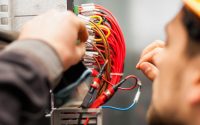What Is Microinjection?
The microinjection technique is a method of inserting DNA into cells. It is more effective than electroporation, and is especially useful in delivering DNA to giant cells.
The procedure involves injecting a small volume of liquid into the corion of an egg or oocyte. It then pierces the cell wall to allow the DNA to enter the cytoplasm.
It is a non-viral method
Microinjection is an essential technique for transferring genes into living cells. DNA, or deoxyribonucleic acid, is the genetic material found in all organisms. It is encoded as a code made up of four chemical bases: adenine (A), guanine (G), cytosine (C), and thymine (T). Microinjection is one of the most flexible techniques for introducing DNA into live cells. It allows researchers to study the function of particular genes in a cell or an entire organism.
The microinjection process involves placing an embryo on a glass coverslip under an inverted microscope with differential interference contrast optics and injecting it with capillary metal microneedles. It requires precise alignment between the animal and the needle, reliable immobilization on the coverslip, and a skilled technician. However, new technologies are making this process easier and more reliable. WPI offers several microinjection pumps with touch screen control and footswitch operation that make the process simpler and safer. These pumps provide repeatable operations and a variety of injection capacities.
It is a non-toxic method
Microinjection is an efficient and non-toxic method for introducing genetic material into a living cell. It has been used to transfer DNA into large frog eggs, mammalian cells and embryos, and plant tissues. This method is more accurate than previous techniques and can improve the results of gene cloning experiments.
This technique is an effective way to produce transgenic mice. It involves injecting DNA into the pronucleus of an unfertilized egg to create a new organism with a specific genotype. It is also used to clone animals and study cell biology, viruses and stem cells.
Microinjection is a delicate process that requires precise control of the injection equipment. It uses a micromanipulator to hold the pipette and a microcapillary needle usually between 0.5 and 5 mm in diameter, which penetrates the cell membrane and nuclear envelope. Moreover, it is important to know that not all microinjected embryos will survive the process. Some will arrest in the one-cell stage, while others develop incorrectly and show a fragmented appearance.
It is a non-invasive method
There are many chemical and physical methods for introducing foreign DNA into cells, but microinjection is the most direct approach. Using a micropipette or a fine-tipped glass needle, DNA is injected directly into the host cell. This technique is highly efficient and the amount of DNA delivered can be controlled.
The microinjection technique is used in several applications, including transferring genes between animals. It is also a popular method for creating transgenic mouse models. DNA, or deoxyribonucleic acid, is the hereditary material in almost all organisms. DNA encodes instructions for making proteins, and carries information about an organism’s past and future.
DNA microinjection is a precision task where sub-micrometer level differences can make the difference between success and failure. To perform this work, researchers must use a microscope that is equipped with differential interference contrast optics (DIC). This allows them to visualize the recently fertilized single-cell embryo in detail. The embryo is then injected with the DNA from one species into another organism’s pronuclei.
It is a cost-effective method
Microinjection is a method for mechanically injecting cells, genetic material, or other substances at a microscopic or borderline macroscopic scale. This process involves a glass micropipette and the target is usually a living cell, but may also include intercellular space. The injections are typically performed under an inverted microscope at a magnification power of around 200x.
This technique allows for more precise DNA manipulation and is more cost-effective than electroporation. Moreover, it does not alter the biological configuration of the target cells. It can be used to insert DNA into animal cells, including embryos and plant protoplasts.
Microinjections are an essential step in the production of molded parts that have tight tolerances and complex shapes. However, this requires industry-leading machining capabilities and precision. Micro injection molding tolerances are often as narrow as 1/1000th of an inch, which is why it is important to use the right equipment for the job. Fortunately, there are a number of solutions available that can help you meet these tight specifications.



